Drink that prevents thousands of deaths
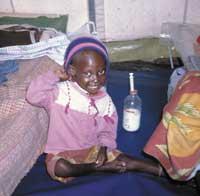
A child from a developing village, before age 3, may suffer 10 or 20 cases of diarrhea, that is, 13% of his life may become ill for this cause. In addition, diarrhea can lead to malnutrition, which increases the severity, duration, and frequency of the following cases. In addition, lack of water, poor hygiene measures and malnutrition increase the frequency, extent and severity of diarrhea.
In the tropical environment, between 20 and 40% of diarrhea are responsible for certain viruses, retobirus, a figure that in dry seasons can reach 60%. Other causes of diarrhea are Escherichia coli enterotoxigenic, Salmonella, Shigella and amoebas, among others.
Different strategies are used to treat diarrhea and its symptoms. These include antibiotics, diarrhoea, and intravenous hydration. But these treatments generate a number of problems and limitations. For example, antibiotics are useful against dysentery, but have no efficacy in viral diarrhea. In addition, there is a risk of forming strains resistant to antibiotics that can be harmful to the intestinal flora. Therefore, excessive use of antibiotics is not recommended. It should also be noted that in most cases the cause of death is dehydration, so it is advisable to always combine antibiotics with hydration therapy.
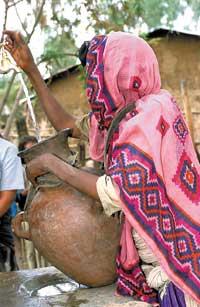
On the other hand, the time trial hides the symptoms, but they do not treat the cause of diarrhea, so at the end of treatment diarrhea may come back. In addition, just as when only antibiotics are given, the diarrhoea do not prevent dehydration, the main cause of death.
In contrast, intravenous hydration therapy has been shown to be very useful in preventing certain deaths as it prevents dehydration. This therapy, however, is expensive and difficult to use in an emergency, as it requires hospitalization of the patient, requires doctors and nurses and a lot of sterile water.
In addition to all this, there is currently a simple, cheap and easy to get antidote: Oral Rehydration Therapy (ABT). It consists in providing the patient with a solution composed of water, glucose and salt to recover the loss of intestinal flow. In fact, the most deadly effects of diarrhea are malnutrition and dehydration, and the goal of treatment is to rehydrate and provide enough calories.
ABT is the result of research into the processes involved in digestion and the causes of diarrhea; the specialized journal Lancet has considered one of the greatest advances in medicine of the last century.
This therapy saves more than a million children each year and, if families knew how to prepare and give ABT, it could save more lives. It can also help reduce cases of malnutrition.
Drawbacks and possibilities of formula improvement
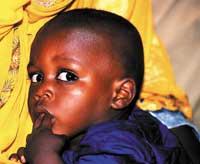
Despite the good results, therapy also has its cons. To begin with, the formulation is not the most appropriate; although it rehydrates, it does not shorten the duration of diarrhea. In addition, to give a liter of dissolution it takes a long time: you have to give a tablespoon periodically, since otherwise vomiting occurs. This takes a lot of time with the patient, and often the caregiver is a busy mother. Consequently, this mother could resort to other treatments. However, in most cases these other treatments are more expensive and less effective. On the other hand, there are countries where dissolution is not well prepared and others where therapy is unknown, especially in developed countries.
There are currently two lines of research to improve the efficiency of VCT. On the one hand, in the social field we are working on the search for new methods to increase the use of therapy and, on the other, in the physiological field, in the search for better formulations.
Social improvements

In some countries more antibiotics and antidiarrheal drugs are used than ABT. Therefore, the aim of this line of research is to expand the use of VCT, as doctors prescribe more and try to have pharmacists sell more. For some, one way to do this is to punish and reward pharmacists or doctors who do not distribute or prescribe therapy. However, some experts recognize that the greatest obstacle to the use of therapy is separation.
On the other hand, family members should be able to prepare the solution properly and be sustainable in its application. For this it is very important to educate people who should give this solution, and although the solution does not cure, you have to warn them that it is necessary to avoid dehydration.
In developing countries, specific educational campaigns are organized for pharmacists, doctors and those responsible for dissolution. After giving talks, seminars or prospecting to family and health, a lower use of antibiotics and antidiarrheal drugs is observed, while the use of ABT is greater. In addition, if information is provided in different ways (written, oral and practical), the campaign has been shown to be more effective.
Improved formulation
Studies on improving the conventional solution do not yet have sufficient data to modify the formulation. However, there are proposals such as dissolution with starch or less sodium.
Starch formulation is a solution of glucose polymers, allowing for increased glucose intake. This results in higher absorption of ions and water, avoiding the adverse osmotic effects of free glucose. Among starches, rice, carrot, corn, sorghum and wheat have been tested, among others. In fact, all of these treatments are very similar to household remedies used long ago. They have the great advantage that they can be made with the ingredients out there in most homes, making it cheaper. In addition, studies show that rice contains molecules with anti-aging properties. Others have proposed using short hydrolyzed starch chains to facilitate the preparation of the solution, thus avoiding cooking.
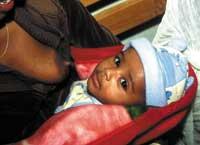
This starch solution gives better results than with children, both in the duration of diarrhea and in the volume of feces, in the frequency of deposition, in the time of reidratation, in the improvement of malnutrition and especially in the recovery of weight. However, these data are not final because the results vary depending on the agent of diarrhea, the patient's age and the feeding option. Therefore, a better solution to replace standard therapy has not yet been found.
The other proposed solution is to reduce the sodium amount of the solution. Low concentration solutions reduce the volume of feces, being hypoonic water is absorbed and with it sodium. By the way the risk of vomiting is reduced. The preparations used in the treatment of dehydration caused by diarrhea in our environment are usually of this type.
However, WHO recommends that AVT be accompanied by water or other hypoonic drink, which translates into benefits derived from a low salt solution. Another WHO recommendation is that, if possible, feeding should not be stopped, much less in infants, since breast milk protects the child.
Conclusion
Choosing the right ABT at every moment is not easy. In addition, there is a great debate about the effectiveness of the ABT standard and the preparations that try to improve it, based on scientific and technical reasons, distribution, acceptance, ease of preparation, etc. Therefore, despite the great scientific advances made, solutions with better characteristics than the ABT standard have not yet been agreed.
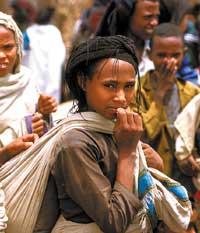
On the other hand, the implementation of a therapy in a village should take into account local culture and eating habits. In fact, in some places, home remedies similar to this therapy are always used, while in other cultures, confidence in pharmacological treatments, such as antibiotics, is greater than in treatments similar to domestic remedies. Therefore, when starting a plan against diarrheas it is necessary to take into account all these agents.
According to some studies, cereal based therapies are more accepted and used with fewer defects than packaged solutions. However, the most important thing is to prepare and manage the solution properly; the differences between the solutions are very small compared to the problems that can occur in the preparation and application.
Results of Oral Rehydration Therapy The first test of efficacy of VCT was obtained in 1971. At that time, Bangladesh welcomed about 2 million refugees and the mortality rate for those suffering from cholera was around 30%. In one of the refugee camps, relatives gave patients a glucose and salt solution that reduced mortality to 3%. In view of the result, the following formula was established: water, sodium chloride, glucose, potassium chloride and bicarbonate in isotonic plasma concentration. In fact, in the 1970s, it was discovered that microorganisms inhibit sodium absorption pathways, but that if glucose is ingested, the absorption capacity of ions is not lost. So they put it into the glucose formula. Potassium chloride was added to compensate for potassium extracted from cells and bicarbonate to compensate for losses of alkaline substances in feces. Bicarbonate was then replaced with citrate. As the formula is simple, this solution, or very similar, can be prepared with household components. In many countries preparations containing these ingredients are made and to reach 60% of the world's children, there is a distribution network. This therapy has saved many lives and reduced the number of people who have had to go to the hospital due to acute diarrhea, decreasing the time of residence of the attendees. The effectiveness of this treatment is evident in relation to mortality rates below five years. Between 1987 and 1995, diarrheal deaths ranged from 5 million to 3 million, even for other reasons, although between 8 and 9 million children die each year. According to the latest data released by the WHO, the decline of 2000 caused 1.5 million deaths in children under five. In the last decade the number of crowns entered for this reason has decreased considerably. |





